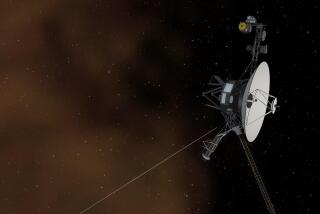Navigation System Rollover Accomplished Smoothly
The network of navigational satellites known as the Global Positioning System quietly passed through a critical transition Saturday as its synchronized clocks rolled back to a date of zero, causing few if any problems, according to initial reports.
The network of 27 satellites, now widely used by the military, businesses and consumers to find exact locations on the planet, had been a source of concern because the system faced a millennium bug-like problem that occurs about every 20 years.
But at a few seconds before midnight Greenwich mean time (5 p.m. PDT), the system smoothly completed its rollover, causing barely a hiccup around the world, although officials cautioned that the full effect of the change would only be known in the coming weeks.
“There have been no problems at all that have been reported to us,” said Lt. Sandy Sears, a spokesman for the U.S. Coast Guard, which is monitoring incidents involving the GPS rollover.
The Air Force Space Command, which monitors the GPS satellites and ground stations, also reported no problems with the transition.
The GPS rollover problem stems from the way that the satellites keep track of the date. The system, which is owned and operated by the U.S. Department of Defense, was designed to count the number of weeks since Jan. 6, 1980.
To conserve memory space, the satellites would only count up to 1,023 weeks and then start all over again at zero in much the same way that a car odometer rolls over after 100,000 miles.
The satellites are unaffected by the rollover, but receivers could interpret the zero date as Jan. 6, 1980, causing the devices to provide the wrong date or location, or even stop working.
Most GPS equipment was designed to handle the date transition, but government agencies and GPS makers had said that there could be a variety of unexpected problems in some devices, particularly older models.
Experts had predicted few problems since the date plays a less critical role in locating position, which is accomplished by comparing the minute time differences in receiving a signal from several satellites.
But predicting the effect of the rollover was difficult because of the wide range of uses for the system and the variety of receivers that have been built over the years.
Besides its navigational uses, the system is also used to synchronize time on computer systems and coordinate television transmissions and paging networks. Telecommunications companies use the system to help maintain a standard reference frequency for cellular phone communication.
“We’re going to keep monitoring the situation for the next few days, but so far everything has gone precisely as predicted,” said John Lovell, director of quality for Trimble Navigation Ltd., the leading maker of GPS devices. “It’s turned out to be pretty much a nonevent for us.”
More to Read
Sign up for Essential California
The most important California stories and recommendations in your inbox every morning.
You may occasionally receive promotional content from the Los Angeles Times.











